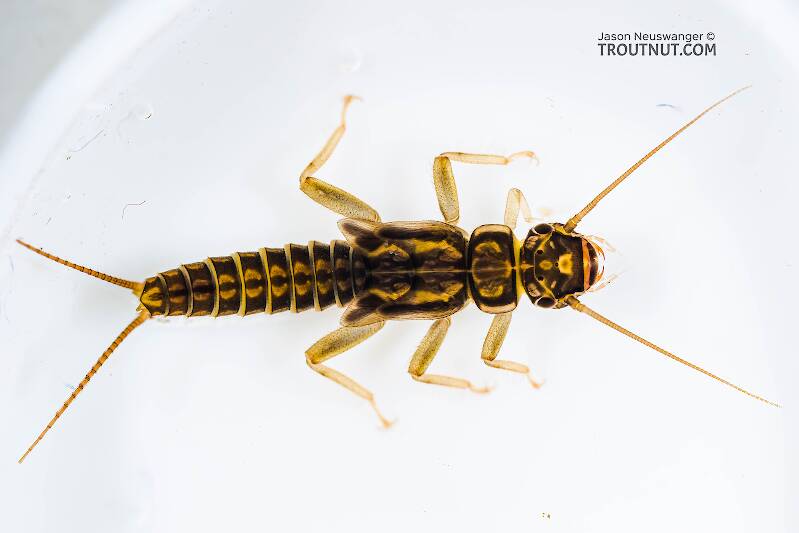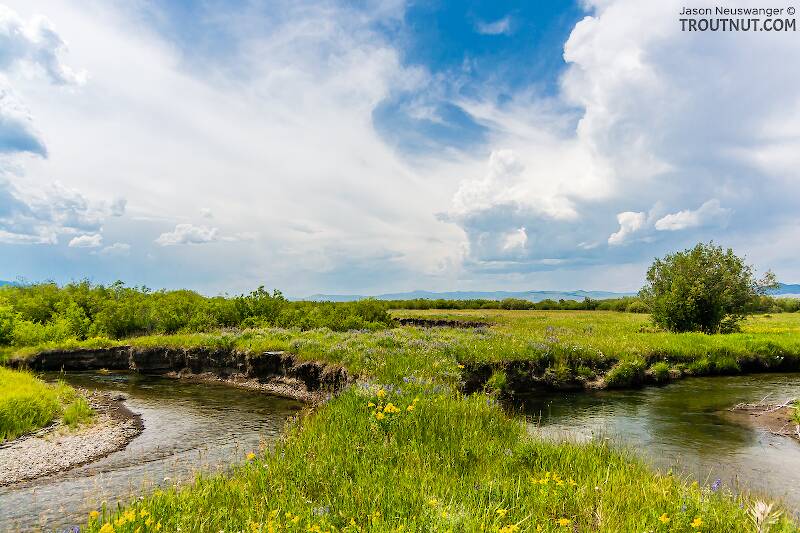
Hex Mayflies
Hexagenia limbata
The famous nocturnal Hex hatch of the Midwest (and a few other lucky locations) stirs to the surface mythically large brown trout that only touch streamers for the rest of the year.


Stonefly Species Allocapnia indianae (Little Snowflies)
Species Range
Physical description
Most physical descriptions on Troutnut are direct or slightly edited quotes from the original scientific sources describing or updating the species, although there may be errors in copying them to this website. Such descriptions aren't always definitive, because species often turn out to be more variable than the original describers observed. In some cases, only a single specimen was described! However, they are useful starting points.
Description from GBIFthe Global Biodiversity Information Facility
Source: Epiproct And Dorsal Process Structure In The Allocapnia Forbesi Frison, Allocapnia Pygmaea (Burmeister), And Allocapnia Rickeri Frison Species Groups (Plecoptera: Capniidae), And Inclusion Of Allocapnia Minima (Newport) In A New Species Group
Male epiproct. Apical segment of upper limb ca. 265 - 277 µm long, armed on apical ca. 152 - 172 µm with dense patch of wave-like spikes (Figs. 49 - 52); apical segment ca. 100 - 106 µm wide at base, tapered to a narrow rounded tip. Basal segment of upper limb ca. 257 µm long and ca. 65 - 67 µm wide at mid-length; basal segment with a broad, shallow, median groove. Greatest width of lower limb ca. 176 - 187 µm; lower limb bears a sparse, marginal row of long setae in apical third (Fig. 49). Male tergal process. Prominent raised structures on abdominal terga 7 and 8 (Figs. 53 - 54). Tri-lobed process of tergum 8 ca. 140 - 146 µm wide and bearing a broad, shallow median notch, interrupted by median projection. Lobes of process covered with scale-like structures; anterior face of process bears a deep transverse groove (Fig. 53). In lateral aspect, lobes extend vertically as thin discs set on narrow bases. Process of tergum 7 ca. 100 µm wide; similar in structure to 8 th tergal process.
Start a Discussion of Allocapnia indianae
Stonefly Species Allocapnia indianae (Little Snowflies)
Species Range
Common Names
Resources
- NatureServe
- Integrated Taxonomic Information System
- Global Biodiversity Information Facility
- Described by Ricker, W.E. (1952) Systematic Studies in Plecoptera. Indiana University Publications Science Series 18, 1–200.

